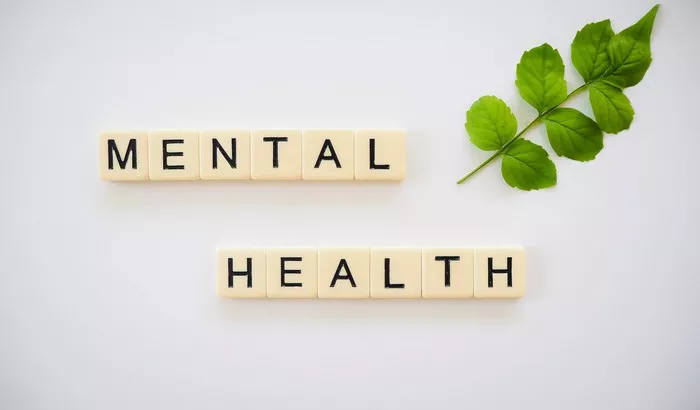Rapid cycling is a phenomenon observed in certain mental health conditions, particularly mood disorders such as bipolar disorder. It involves frequent and distinct episodes of mood disturbance, including manic, hypomanic, depressive, or mixed episodes, occurring within a short period. This article aims to delve into the intricacies of rapid cycling, exploring its definition, prevalence, causes, symptoms, diagnosis, and treatment options.
Defining Rapid Cycling
What is Rapid Cycling?
Rapid cycling is a term used to describe the pattern of mood episodes in bipolar disorder characterized by frequent shifts between manic, hypomanic, depressive, or mixed states. To meet the criteria for rapid cycling, a person must experience at least four mood episodes within a 12-month period.
Types of Rapid Cycling
There are two main types of rapid cycling:
Bipolar I Rapid Cycling: In bipolar I disorder, rapid cycling involves distinct episodes of full-blown mania and major depression.
Bipolar II Rapid Cycling: In bipolar II disorder, rapid cycling typically involves episodes of hypomania and major depression, without full-blown mania.
Prevalence of Rapid Cycling
How Common is Rapid Cycling?
Rapid cycling occurs in a subset of individuals with bipolar disorder, though its prevalence varies. Research suggests that approximately 10-20% of people with bipolar disorder experience rapid cycling, with higher rates observed in bipolar II compared to bipolar I disorder.
Demographic Factors
Rapid cycling may occur more frequently in certain demographic groups, including women and individuals with comorbid substance use disorders or a history of childhood trauma. However, rapid cycling can affect individuals of any age, gender, or background.
Causes of Rapid Cycling
Biological Factors
Several biological factors may contribute to the development of rapid cycling, including:
Genetics: Genetic predisposition plays a role in bipolar disorder and may influence the likelihood of rapid cycling.
Neurotransmitter Imbalance: Dysregulation of neurotransmitters such as serotonin, dopamine, and norepinephrine in the brain may contribute to mood instability.
Hormonal Changes: Fluctuations in hormone levels, particularly in women during menstruation, pregnancy, or menopause, can trigger mood episodes.
Psychosocial Factors
Psychosocial stressors can also exacerbate rapid cycling, including:
Life Events: Significant life changes, trauma, or chronic stressors may trigger mood episodes.
Substance Use: Alcohol or drug abuse can destabilize mood and increase the frequency of mood episodes.
Symptoms of Rapid Cycling
Manic or Hypomanic Episodes
During manic or hypomanic episodes, individuals may experience:
Elevated Mood: Feelings of euphoria, grandiosity, or extreme optimism.
Increased Energy: Heightened activity levels, restlessness, and reduced need for sleep.
Impulsivity: Risky behaviors, impulsiveness, and poor judgment.
Racing Thoughts: Rapid speech, racing thoughts, and difficulty concentrating.
Depressive Episodes
During depressive episodes, individuals may experience:
Low Mood: Persistent sadness, hopelessness, or emptiness.
Fatigue: Loss of energy, fatigue, and decreased interest in activities.
Sleep Disturbances: Insomnia or hypersomnia, changes in appetite or weight.
Negative Thoughts: Feelings of worthlessness, guilt, or suicidal ideation.
Mixed Episodes
Mixed episodes involve symptoms of both mania/hypomania and depression occurring simultaneously or in rapid succession. Common symptoms include:
Agitation: Restlessness, irritability, or agitation.
Increased Energy: Elevated mood combined with depressive thoughts.
Rapid Cycling Between Mood States: Frequent shifts between highs and lows within a short period.
Diagnosis of Rapid Cycling
Diagnostic Criteria
The diagnosis of rapid cycling is based on specific criteria outlined in the Diagnostic and Statistical Manual of Mental Disorders (DSM-5). To be diagnosed with rapid cycling, a person must meet the following criteria:
1. Experience at least four mood episodes (mania, hypomania, depression, or mixed) within a 12-month period.
2. Mood episodes must be distinct, with clear changes in mood and behavior lasting for at least a few days.
3. Episodes must meet the criteria for bipolar I or bipolar II disorder.
Clinical Assessment
Diagnosis of rapid cycling involves a comprehensive clinical assessment, including:
Medical History: Review of past psychiatric and medical history, including previous mood episodes and treatments.
Symptom Evaluation: Assessment of current symptoms and their impact on daily functioning.
Family History: Exploration of family history of mental illness, particularly bipolar disorder or rapid cycling.
Physical Examination: Evaluation for any medical conditions or substance use that may contribute to mood instability.
Treatment Options for Rapid Cycling
Medication Management
Medications are a cornerstone of treatment for rapid cycling and may include:
Mood Stabilizers: Drugs such as lithium, valproate, or lamotrigine help stabilize mood and reduce the frequency and severity of mood episodes.
Antipsychotics: Atypical antipsychotics like quetiapine or aripiprazole may be used to manage symptoms of mania or depression.
Antidepressants: In some cases, antidepressants may be prescribed cautiously to address depressive symptoms, often in combination with mood stabilizers to prevent mood destabilization.
Psychotherapy
Psychotherapy, particularly cognitive-behavioral therapy (CBT) and interpersonal therapy, can be beneficial for managing rapid cycling by:
Identifying Triggers: Understanding and managing stressors or triggers that contribute to mood instability.
Developing Coping Strategies: Learning coping skills to regulate emotions, manage impulsivity, and improve problem-solving.
Enhancing Medication Adherence: Addressing barriers to medication adherence and promoting treatment compliance.
Lifestyle Modifications
Certain lifestyle changes can complement medical and psychological treatments, including:
Maintaining a Regular Routine: Establishing a consistent daily schedule for sleep, meals, and activities can help stabilize mood.
Avoiding Triggers: Minimizing exposure to stressors, alcohol, drugs, or other substances that may exacerbate mood instability.
Regular Exercise: Engaging in regular physical activity can improve mood, reduce stress, and promote overall well-being.
Supportive Interventions
Supportive interventions, such as support groups, peer counseling, or self-help resources, can provide:
Emotional Support: Connecting with others who share similar experiences can reduce feelings of isolation and provide validation.
Practical Advice: Sharing coping strategies, tips for managing symptoms, and navigating treatment options.
Conclusion
Rapid cycling in mental health, particularly in conditions like bipolar disorder, presents a significant clinical challenge. It is characterized by frequent shifts between manic, hypomanic, depressive, or mixed mood states within a short period. Understanding the prevalence, causes, symptoms, diagnosis, and treatment options for rapid cycling is crucial for clinicians, patients, and caregivers. By implementing a comprehensive approach that integrates medication management, psychotherapy, lifestyle modifications, and supportive interventions, individuals with rapid cycling can achieve better symptom management, improved quality of life, and long-term stability.
[inline_related_posts title=”You Might Be Interested In” title_align=”left” style=”list” number=”6″ align=”none” ids=”9563,9559,9554″ by=”categories” orderby=”rand” order=”DESC” hide_thumb=”no” thumb_right=”no” views=”no” date=”yes” grid_columns=”2″ post_type=”” tax=””]
































